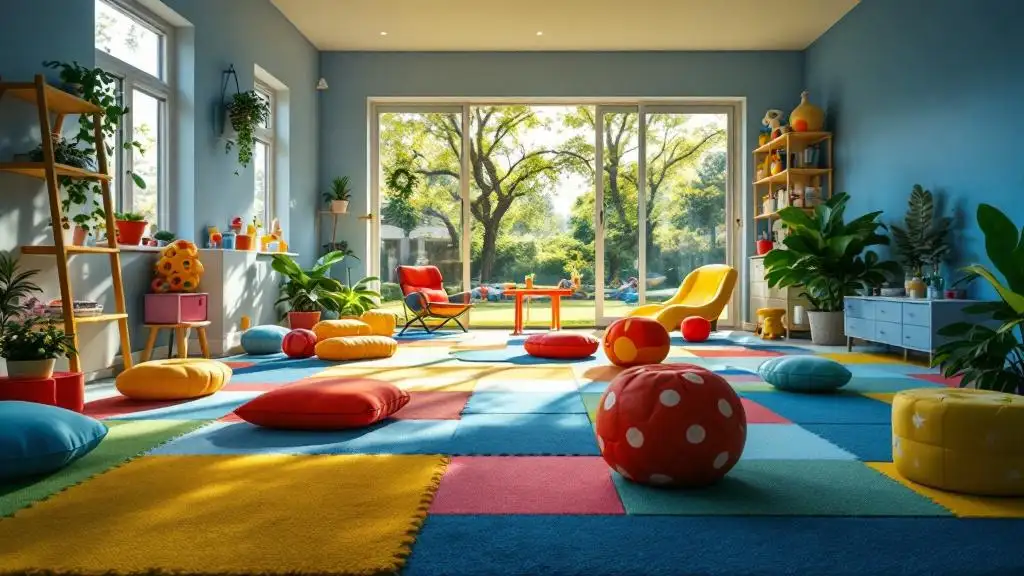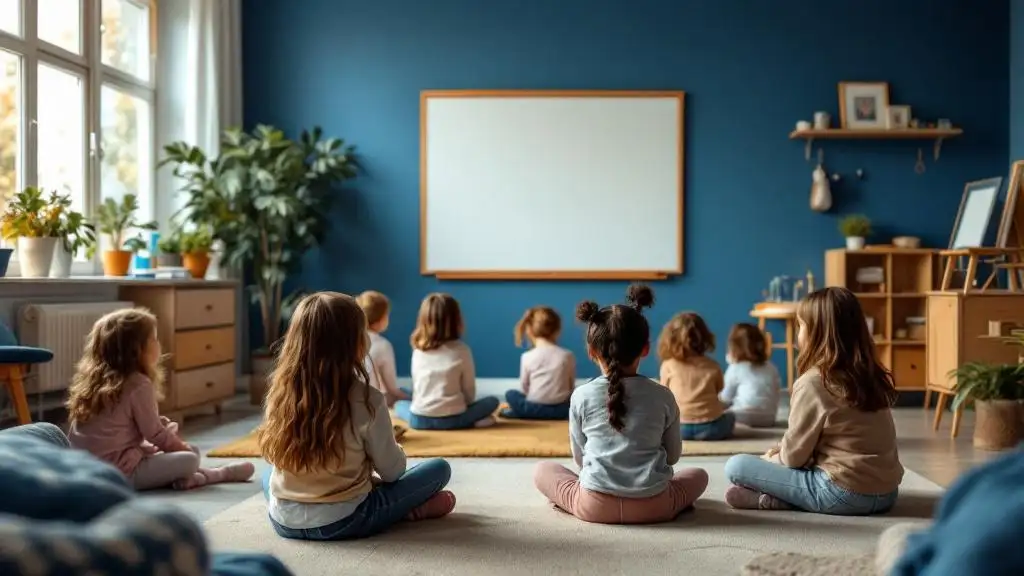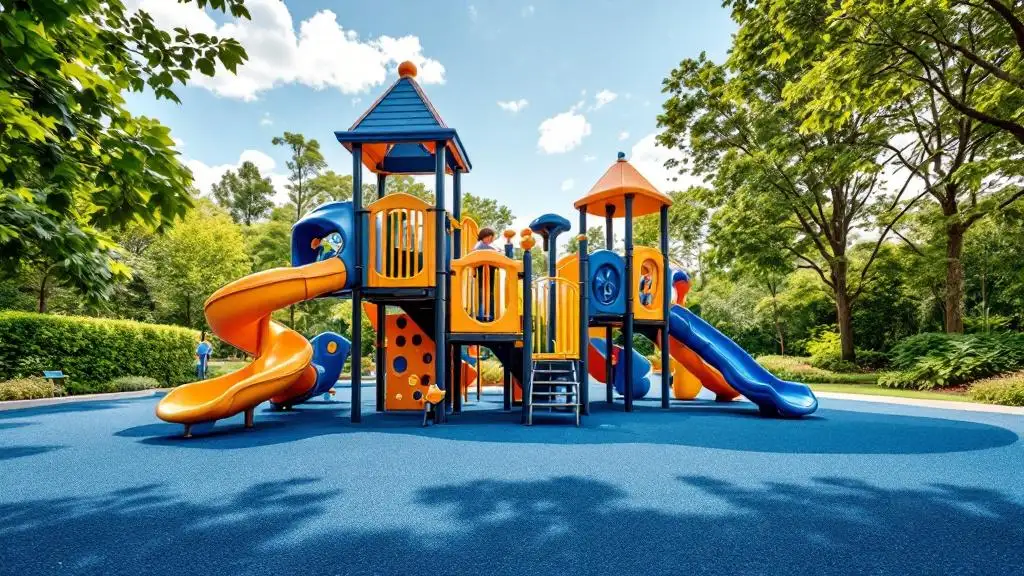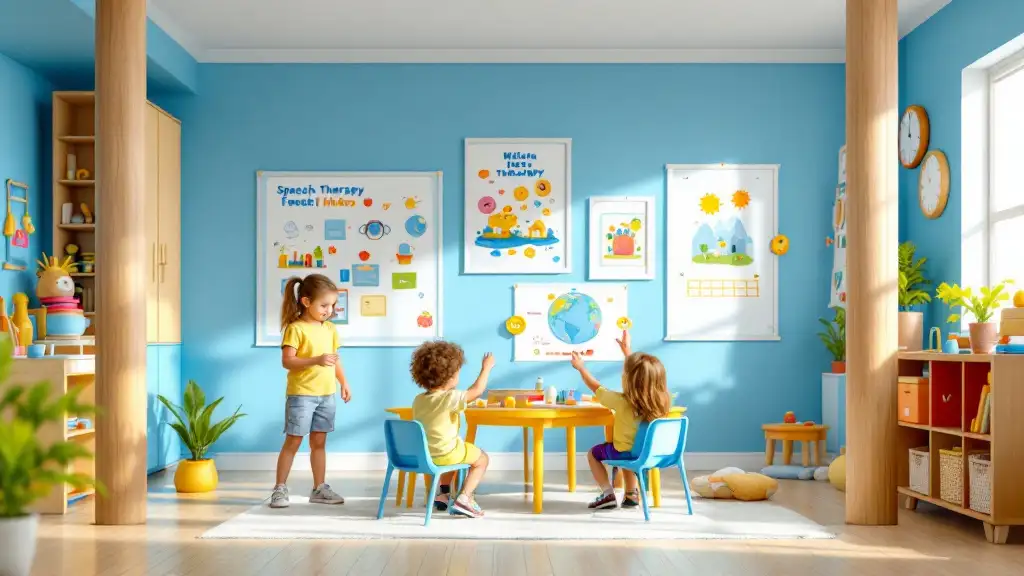
Understanding and Supporting Children with Social Anxiety
Social anxiety disorder (SAD) affects many children, impairing their social interactions and overall well-being. Supporting these young individuals requires a multi-faceted approach that combines evidence-based therapies, parental involvement, and supportive environments. Recent research underscores the potential of integrating cognitive-behavioral programs with supportive parenting strategies, offering promising avenues for improving outcomes.
The Role of DDD and SPACE in Treating Social Anxiety

Details of the DDD (Denken + Doen = Durven) Program
The DDD program, which translates to 'Thinking + Doing = Daring,' is a cognitive-behavioral therapy tailored specifically for children and adolescents with social anxiety. Throughout a 12-week course, children learn about the origins of anxiety and distinguish between normal and excessive anxiety responses. A major focus is on changing unhelpful thought patterns that fuel fears related to social interactions.
Participants are encouraged to challenge and modify their negative beliefs about social situations. They are also guided to take deliberate actions that confront fears gradually, building confidence and reducing avoidance behaviors. This combination of cognitive restructuring and behavioral activation helps children develop a more realistic view of social risks and their own capabilities.
The SPACE Parent Program
Complementing the child's therapy, the SPACE program targets parents. Its aim is to reduce accommodating behaviors that may inadvertently reinforce the child's social fears. Parents are taught strategies to support their children effectively, such as encouraging independence and providing appropriate social challenges.
The program emphasizes reducing parental responses that maintain anxiety, like overprotection or excessive reassurance. Parents also learn skills to support their child's emotional regulation and to foster a more supportive environment that promotes courageous social engagement.
Duration and Structure of Intervention
Both programs are designed to be completed over a period of 12 weeks. The child-focused DDD sessions combine education about anxiety and practical exercises to manage fears. Simultaneously, parents participate in the SPACE program to acquire skills for behavioral support and reduction of parental accommodation.
The intervention involves regular sessions, with ongoing assessments and activities to reinforce learning and behavioral change. Children and parents are encouraged to complete brief daily questionnaires via phone, tracking their progress, challenges, and emotional states.
Goals and Expected Outcomes
The primary aim of integrating DDD and SPACE is to enhance the effectiveness of treatment for social anxiety in children. The expected outcomes include a significant reduction in the severity of social anxiety symptoms, improved social functioning, and greater family support.
By addressing both the child's cognitive and behavioral patterns and the parental environment, the program seeks to increase the likelihood of overcoming social fears. The study's overall goal is to determine whether this combined approach can boost treatment success rates compared to standard interventions.
| Program Component | Focus Area | Main Objective | Duration | Methods Used |
|---|---|---|---|---|
| DDD (Denken + Doen = Durven) | Child cognitive-behavioral therapy | Reduce social fear through thought management and behavioral practice | 12 weeks | Education, thought restructuring, behavioral exercises |
| SPACE | Parental support | Decrease parental accommodation, support child's social efforts | 12 weeks | Parental coaching, skill development |
| Combined Approach | Child + parent | Maximize treatment success by addressing both internal fears and environmental factors | 12 weeks | Collaborative therapy sessions and daily monitoring |
This integrated strategy aims not only to reduce social anxiety symptoms but also to empower children and their families to handle social challenges more confidently and effectively.
Evaluating Treatment Effectiveness in Children

Study scope and participant details
The research focuses on nine children aged between 8 and 16 years, along with their parents. Over a 12-week period, they participate in an evidence-based treatment approach that combines cognitive behavioral therapy (CBT) with a parent support program. This study aims to determine whether this combined approach can improve social anxiety outcomes more effectively than individual treatments alone.
Assessment tools used
To measure the impact of the treatments, the study employs several assessment strategies. Central to these is a reliable structured diagnostic interview that evaluates the severity of social anxiety. Supplementary tools include questionnaires completed by children and parents, which explore social anxiety levels, parental behaviors, and stress. Additionally, daily short questionnaires administered via phone help track ongoing changes, providing real-time insights into the child's progress.
Measurement of social anxiety severity
A crucial element of the study is determining how much social anxiety affects each child. The primary measurement method is a structured diagnostic interview, which offers a standardized way to quantify social anxiety severity. This structured approach ensures accuracy and consistency across participants. Other measurements, such as self-report questionnaires and daily diaries, complement the interview, capturing fluctuations and providing a comprehensive view of treatment effects.
Significance of combined treatments
The main goal of integrating the 'Denken + Doen = Durven' (DDD) therapy with the 'Supportive Parenting for Anxious Emotions in Children' (SPACE) program is to enhance treatment success. DDD focuses on teaching children about anxiety, distinguishing normal from excessive fears, and developing skills to manage unhelpful thoughts. Meanwhile, SPACE targets parental behaviors, reducing accommodating actions that may reinforce anxiety. Together, these approaches address both child and parent factors, aiming for a more holistic and effective intervention.
Additional context on social anxiety management resources
Helping individuals with social anxiety involves diverse resources. Educational materials such as "Stepping out of Social Anxiety" provide structured guidance on understanding and tackling symptoms through evidence-based strategies like cognitive restructuring and exposure. Support organizations like the Social Anxiety Association and ADAA offer valuable information, support groups, and therapy options. Professional treatments, notably Cognitive Behavioral Therapy (CBT), are strongly recommended by mental health organizations due to their proven effectiveness. For ongoing tracking and personal progress, tools like thought diaries and activity schedules are recommended. Urgent support can also be accessed via hotlines such as the National Suicide Prevention Lifeline, emphasizing the importance of a comprehensive support system.
How are social anxiety levels assessed in children participating in intervention studies?
In clinical studies, social anxiety levels in children are assessed using various reliable methods. The structured diagnostic interview is central to providing a standardized severity measure. Additional assessments include questionnaires focusing on fears, avoidance behaviors, and parental reports of the child's social activities and emotions. Daily diaries completed by both children and parents offer ongoing insights into the child's experiences and responses to treatment. These combined methods help researchers accurately gauge how social anxiety changes over time and in response to the intervention, ensuring a thorough evaluation of treatment effectiveness.
| Assessment Tool | Purpose | Who Completes It | Frequency | Importance |
|---|---|---|---|---|
| Structured Diagnostic Interview | Evaluate severity of social anxiety | Clinicians or trained researchers | Pre, mid, and post-treatment | Ensures standardized severity measurement |
| Questionnaires | Measure social fears, avoidance, parental stress | Children, parents | At baseline, during, and after | Capture subjective experiences and treatment progress |
| Daily Diaries | Track ongoing symptoms and reactions | Children, parents | Daily | Provide real-time data for dynamic assessment |
This comprehensive evaluation approach ensures a robust understanding of how well the combined treatment approach impacts children's social anxiety, guiding future clinical practices and research initiatives.
Support Systems and Strategies for Children

What types of support systems and interventions are available for individuals with social anxiety?
Support for children with social anxiety involves a range of therapeutic, educational, and lifestyle strategies. Cognitive-behavioral therapy (CBT) is a widely used approach that helps children identify and challenge negative thoughts about social situations. Exposure therapy gradually introduces children to feared social settings in a safe and controlled manner.
In addition to psychotherapy, medication can be part of the support system. Selective serotonin reuptake inhibitors (SSRIs) such as sertraline and paroxetine are often prescribed to reduce anxiety symptoms. For short-term relief in specific situations, medications like beta-blockers or anti-anxiety drugs might be used.
Support groups offer children opportunities to practice social skills and share their experiences with peers facing similar challenges. Self-help techniques, including relaxation exercises, stress management, and social skills training, can reinforce therapy gains. Lifestyle choices like good sleep, regular exercise, and healthy eating also contribute to overall anxiety reduction.
A combination of these approaches—therapy, medication, peer group support, and healthy lifestyle habits—can provide comprehensive management for children coping with social anxiety.
What educational resources are available for supporting individuals with social anxiety?
Educational materials and resources are crucial for understanding and managing social anxiety. Workbooks such as "Stepping out of Social Anxiety" serve as structured guides teaching children and their families about anxiety symptoms, thought patterns, and effective coping strategies.
Support organizations like the Social Anxiety Association, Anxiety and Depression Association of America (ADAA), and NAMI provide valuable information, peer support groups, and referrals to specialized treatments. These organizations also offer educational tools including pamphlets, online courses, and workshops tailored for children and parents.
Professional treatment options, especially Cognitive Behavioral Therapy, are promoted through these resources as evidence-based methods proven to help children overcome social anxiety. Additionally, tools like thought diaries and social activity planning can help children and parents monitor progress and develop new skills.
Helplines such as the National Suicide Prevention Lifeline offer urgent support and guidance for children experiencing severe anxiety or emotional distress.
How does the ISA project incorporate these strategies?
The ISA project specifically targets social anxiety in children by combining two evidence-based programs over 12 weeks. The first, a cognitive-behavioral approach called Denken + Doen = Durven (DDD), educates children on how anxiety develops, distinguishing between normal and excessive fears, and training them on how to modify unhelpful thoughts.
Simultaneously, the project involves parents through the Supportive Parenting for Anxious Emotions in Children (SPACE) program. Parents learn skills to reduce accommodating behaviors that may reinforce anxiety and gain strategies to support their children effectively.
The project measures success primarily through assessments of social anxiety severity, aided by structured diagnostic interviews and questionnaires. Additional data from daily reports via phone help track progress and reinforce therapy efforts.
What additional support mechanisms and educational efforts exist?
Beyond therapy and medication, other support structures include school-based interventions, social skills groups, and community programs that promote social engagement. Schools can implement social skills curricula or offer peer mentoring to foster confidence.
Educational campaigns to increase awareness about social anxiety and reduce stigma are essential. These programs inform teachers, parents, and peers about how to support children in social settings.
Lifestyle factors such as maintaining routines for sleep, exercise, and nutrition, along with self-help practices like relaxation and mindfulness, contribute significantly to managing social anxiety.
Below is a comparison table summarizing various support options:
| Support Type | Examples | Additional Benefits |
|---|---|---|
| Psychotherapy | CBT, exposure therapy | Builds coping skills, reduces fear in social settings |
| Medication | SSRIs, beta-blockers | Symptom relief when combined with therapy |
| Peer Support | Support groups, peer mentoring | Encourages social practice and normalization |
| Educational Resources | Workbooks, online info, organizations | Increase understanding, empower self-management |
| Lifestyle and Self-Help | Sleep hygiene, relaxation, exercise | Reduces overall anxiety and promotes well-being |
Implementing a mix of these supports tailored to each child's needs offers the most comprehensive path to overcoming social anxiety.
Creating a Supportive Environment for Children
 Supporting children with social anxiety involves multiple strategies that foster confidence and reduce social pressures. Both parents and educators play a vital role in creating an environment conducive to social growth.
Supporting children with social anxiety involves multiple strategies that foster confidence and reduce social pressures. Both parents and educators play a vital role in creating an environment conducive to social growth.
One effective approach is reducing social pressures by encouraging gradual exposure to social situations. This allows children to build confidence at a comfortable pace, celebrating small successes along the way. For example, encouraging participation in small group activities or structured play can help children feel more secure.
Building confidence can also be achieved through systematic skill development. Role-playing, social stories, and peer support groups provide safe settings for children to practice social interactions and improve their skills. Additionally, teaching children relaxation techniques like deep breathing, muscle relaxation, or mindfulness helps them manage physical symptoms of anxiety, making social encounters less overwhelming.
Parents and teachers should be aware of their role in supporting these efforts. Parental involvement can be strengthened through programs such as 'Supportive Parenting for Anxious Emotions in Children' (SPACE), which aims to reduce excessive parental accommodation that might inadvertently reinforce anxiety. Teachers can integrate social skills training within the classroom and facilitate peer-led activities that promote social inclusion.
In addition to direct social skills training, incorporating self-care and lifestyle modifications can significantly benefit anxious children. Encouraging regular physical activity, adequate sleep, and healthy eating supports overall emotional resilience.
A combined effort from family, school, and healthcare providers forms a comprehensive support system for children. This holistic approach not only addresses immediate social fears but also helps children develop lifelong tools for handling anxiety.
How can individuals prepare for social situations to manage anxiety?
To manage social anxiety effectively, individuals should recognize and challenge negative thoughts about social interactions, employing cognitive strategies such as realistic thinking. Practicing relaxation techniques like deep breathing or mindfulness can help reduce physical symptoms. Gradual exposure to social scenarios builds confidence over time.
Understanding personal fears and observing one’s own physical and emotional responses allow for the development of tailored coping strategies. Social skills practice, setting small goals, and gradually expanding social networks further empower individuals. Additionally, seeking support from therapists or support groups provides continuous encouragement and guidance.
What strategies can help parents and teachers support anxious children?
Parents and teachers should foster a consistent, understanding, and pressure-free environment. Encouraging children to face social situations gradually and praising their efforts build resilience. Teaching coping techniques like deep breathing and positive self-talk can help children manage anxiety.
Supporting social skills development and providing reassurance without additional pressure help children feel safer and more capable. Programs like SPACE assist parents in reducing behaviors that may reinforce anxiety and promote healthier support techniques.
Schools can contribute by implementing social skills programs, facilitating peer support, and creating opportunities for safe social participation. These efforts collectively help children develop confidence and competence in social contexts.
| Strategy Area | Implementation Focus | Additional Details |
|---|---|---|
| Reducing Social Pressures | Gradual Exposure | Start with small settings, increase complexity over time |
| Building Confidence | Skills Practice | Role-playing, social stories, peer groups |
| Parental and Educational Role | Supportive Environment | Use of programs like SPACE, classroom social skills |
| Lifestyle Modifications | Self-care | Sleep, nutrition, physical activity |
By combining these approaches, children with social anxiety can learn to navigate social environments more comfortably, fostering independence and emotional well-being.
Conclusion and Future Directions in Supporting Socially Anxious Children

Overview of combined treatment strategies for social anxiety in children
Recent research emphasizes the potential benefits of integrating cognitive-behavioral therapy (CBT) approaches, such as the 'Denken + Doen = Durven' (DDD) program, with parent-focused interventions like the 'Supportive Parenting for Anxious Emotions in Children' (SPACE). The aim is to address both the child's anxiety and the environmental factors that contribute to it.
In the current ISA study, children aged 8-16 undergo a 12-week treatment involving tailored therapy sessions. They learn about how anxiety works, distinguish between normal and excessive worries, and develop skills to challenge unhelpful thoughts. Simultaneously, parents participate in SPACE, which teaches them to reduce behaviors that inadvertently maintain anxiety, such as excessive reassurance or accommodation.
This integrated approach not only targets the child's internal fears but also modifies parental responses, creating a supportive context that promotes confidence and resilience.
The importance of early intervention
Early identification and treatment are critical in preventing the persistence of social anxiety into adolescence and adulthood. Recognizing symptoms early allows for timely intervention, which can significantly improve outcomes.
Research shows that children who receive prompt support tend to develop better social skills, higher self-esteem, and fewer long-term mental health issues. Schools and pediatricians play a vital role by screening for early signs and referring children to appropriate interventions.
How combined therapy and parent programs improve outcomes
The combination of child-focused therapy and parent involvement addresses both the child's internal coping mechanisms and the family environment. Evidence suggests this dual approach enhances treatment success, as parents learn to foster supportive behaviors while children gain practical skills.
In the ISA study, outcome measures such as the severity of social anxiety, assessed through structured interviews, along with questionnaires on parental accommodation and stress, help evaluate the effectiveness. Early findings indicate that the integrated treatment not only reduces anxiety levels but also improves parental responses, leading to a more supportive environment for the child's social development.
Future research priorities
Looking ahead, research should focus on refining these combined treatment modalities. Potential avenues include incorporating new technologies like virtual reality for exposure therapy, which can provide immersive and controlled environments for children to practice social interactions.
Developing accessible resources for families, schools, and communities is also crucial. These could include online tools, mobile apps, and school-based programs to facilitate early detection and intervention.
Further studies are needed to identify which components of combined treatment are most effective, how to tailor interventions based on individual needs, and how to ensure equitable access across diverse populations.
Resources for social anxiety awareness and management
Individuals seeking help for social anxiety have numerous tools at their disposal. Educational materials such as workbooks and online modules help users understand symptoms and learn coping strategies.
Organizations like the Social Anxiety Association, AA, NAMI, and the Andrew Kukes Foundation offer support networks, informational resources, and treatment options. Therapy types like CBT are widely promoted and supported by evidence-based guidelines.
Assessment tools, including thought diaries and activity schedules, assist individuals in tracking progress. When urgent support is needed, helplines like the National Suicide Prevention Lifeline are available.
Advancing intervention strategies for children
The future of social anxiety treatment in children hinges on early, personalized, and multi-modal interventions. Integrating family involvement with direct child therapy enhances overall effectiveness.
Innovations such as virtual reality exposure, digital therapy platforms, and school-based programs are promising avenues to increase accessibility and engagement.
Research priorities include refining combined treatment models, exploring new technological tools, and ensuring resources are equitable for diverse demographic groups.
By fostering collaboration among mental health professionals, educators, and families, future strategies aim to reduce long-term social and emotional difficulties rooted in childhood social anxiety.
| Aspect | Focus | Future Directions | Resources |
|---|---|---|---|
| Treatment Approaches | Combined child and parent programs | Integration of tech like VR, personalized plans | Support organizations, therapy options |
| Early Detection | Identifying symptoms early | School screening tools, pediatric training | Educational materials, online resources |
| Research Areas | Effectiveness of combined therapies | Refining protocols, innovative tools | Evidence-based guidelines |
| Community Support | Accessibility of interventions | Digital platforms, community programs | Helplines, educational strategies |
Continuing advancements in research and practice hold promise for more effective, accessible, and personalized support for children facing social anxiety, aiming to foster healthier social development and emotional well-being.
Advancing Support and Treatment for Social Anxiety in Children
The integration of innovative programs like DDD and parental support initiatives such as SPACE represent significant progress in addressing childhood social anxiety. Combining evidence-based therapies, family involvement, and supportive environments can markedly improve treatment outcomes. Emphasizing early intervention, personalized treatment plans, and ongoing support systems—both clinical and community-based—is essential for fostering social confidence and resilience among affected children. Continued research and development in this field will enhance the availability and effectiveness of resources, ultimately enabling children to engage more fully in social experiences and improve their quality of life.
References
- ISA - Intervention for Social Anxiety in children and youth
- Social anxiety disorder (social phobia) - Diagnosis and treatment
- Social Anxiety Disorder: What You Need to Know
- Social Anxiety Disorder | CAMH
- Social anxiety disorder: Treatments and tips for managing this ...
- Social Anxiety Disorder: Symptoms, Tests, Causes & Treatments
- Social Anxiety Self-Help Resources - Information Sheets & Workbooks
- RESOURCES - National Social Anxiety Center
- Social anxiety self-help guide - NHS inform












